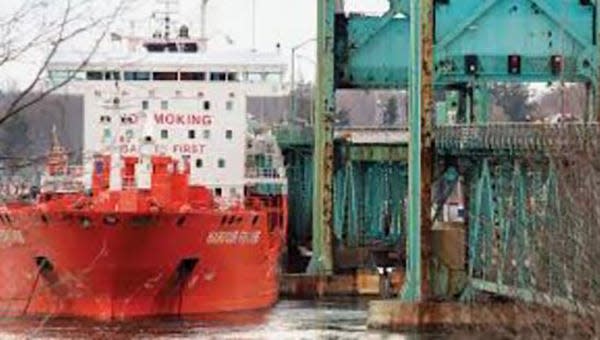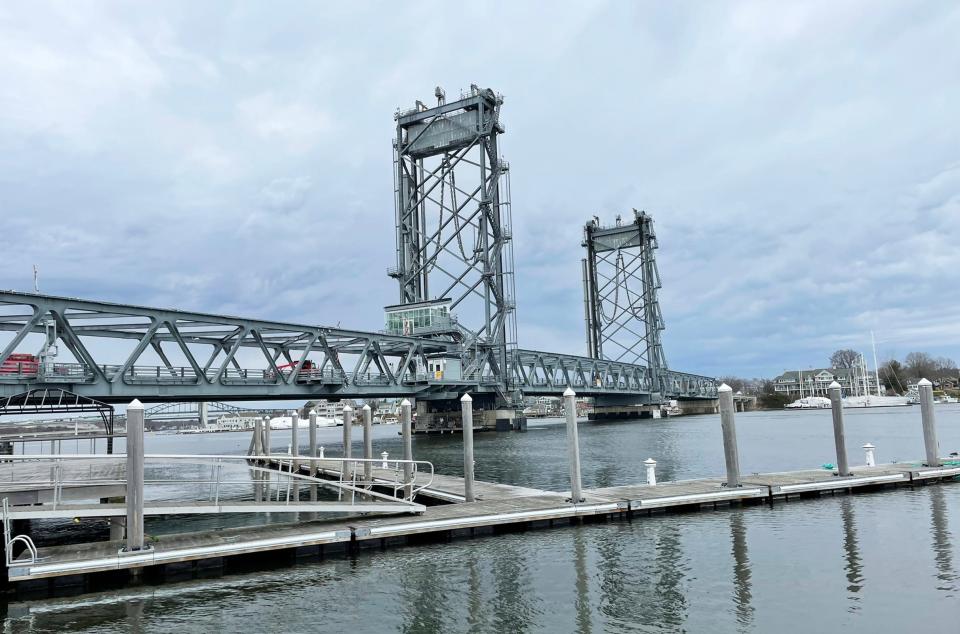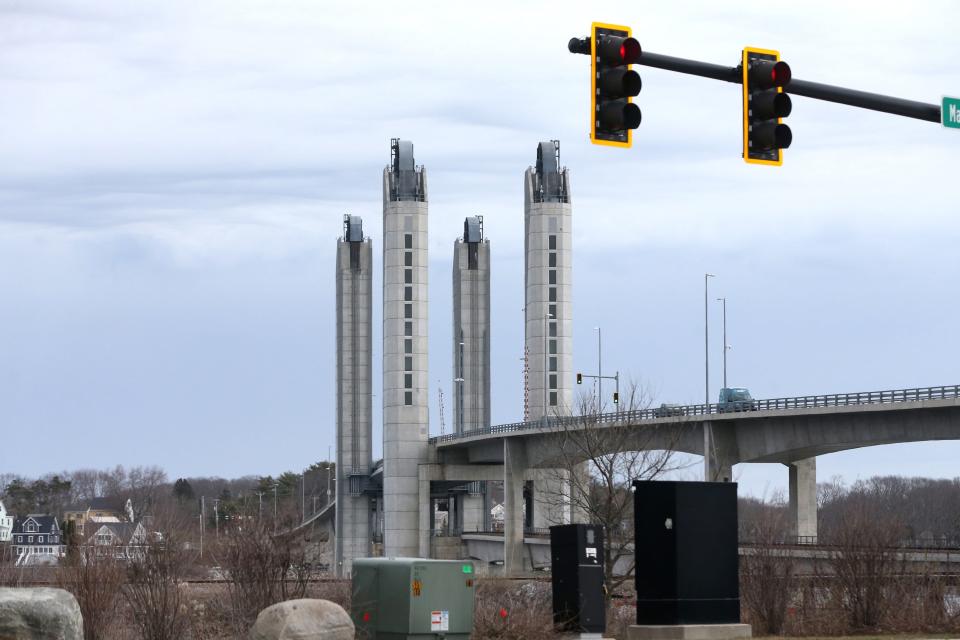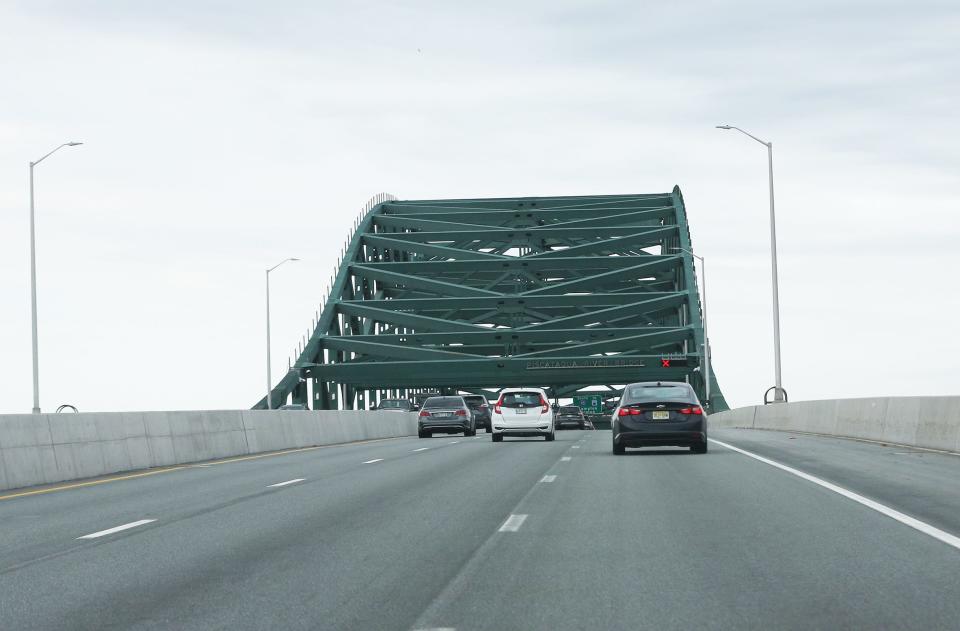Here's why experts say Portsmouth Harbor bridges are protected from ship crashes
PORTSMOUTH — Ten years after the Memorial Bridge avoided catastrophic damage when it was struck by a 600-foot tanker in 2014, experts in bridge design and safety say the major bridges in Portsmouth Harbor have the safety systems in place to prevent major destruction for years to come.
Local residents also remember when the old Sarah Long Bridge was struck in 2013 by Portuguese tanker MV Harbour Feature, causing $1.3 million in damage. (The new Sarah Long Bridge opened in 2018.)

Bridge and working port safety are top of mind for many in the wake of the collapse of the Francis Scott Key Bridge in Baltimore on March 26 after a large cargo ship lost power and collided with the structure. The bridge fell into the Patapsco River, killing three construction workers and leaving another three presumably dead, though rescuers have yet to recover their bodies. Two workers were saved after the bridge collapsed.
Preparing for worse-case scenarios
Beyond the difference in the size of the much smaller Portsmouth Harbor versus the working Maryland port, and in addition to the size of the ships that pass between each waterway, local and state experts note that the safety systems in place in Portsmouth Harbor have proved to be effective.
“We try to consider the worst thing that could happen in the weakest place it could happen to try and prevent it from happening,” said Erin Bell, University of New Hampshire professor of civil and environmental engineering.

The Memorial Bridge and the Sarah Mildred Long Bridge connecting Portsmouth to Kittery, Maine are both lift bridges and let ships pass through each day, stalling traffic on both sides of the Piscataqua River. Nearby, the high-level Piscataqua River Bridge carries traffic along Interstate 95, also from Portsmouth to Kittery, Maine, and is classified as a through arch bridge.
The two lift bridges were both designed with fender systems, according to Jennifer Reczek, the New Hampshire Department of Transportation's administrator of the Bureau of Bridge Design.
“With the Memorial Bridge and the Sarah Long, those were both designed with fender systems, so protective systems on the piers to help absorb the impact and lessen any potential damage to the bridge,” she said. “Our goal is always preservation of life first. Then if we can preserve the structure, that's great, but it's really that preservation of life that we look at as engineers. Absorbing that energy would help decrease the damage to the bridge and allow people time to get off it if there was an impact.”

In March 2014, it was the Memorial Bridge’s fender system that saved the day when the Portland, Maine-bound “Sea Pride” vessel scraped along the fender system protecting the pier on the Maine side of the bridge. The tanker had just offloaded ultra-low sulfur diesel at the Sprague terminal before the accident occurred.
“We've since gone in and replaced that fender system and repaired that. It acted like it was designed,” Reczek said.
At the time, the then-newly built Memorial Bridge had only been open for seven months when the Sea Pride hit and damaged the fender system.
Tugboats a key part of safety equation
The two bridge experts and Geno Marconi, the director of Ports and Harbors for the Pease Development Authority, additionally credited the constant use of tugboats to guide massive vessels in and out of the water beneath and around the three major bridges.
“It’s the pilots’ decision on any vessel coming in here, what tugs and how many tugs they use, and when those vessels come in here they’re escorted by tugboats,” Marconi said. “The ships that come in here, they’re not going at a high rate of speed because of the uniqueness of the Piscataqua River and the twists and turns.”
Watching the disaster event in Baltimore, Bell wondered what the port’s policies are for tugboats guiding vessels through the river.
“The first thing I saw was that the energy that was imparted to that pier had to be awesome to do that to the bridge,” she said. “The amount of force that that vessel impacted into that pier was millions and millions of pounds of force, because you had that truss fly up like it was nothing.”

“I think there’s a different level of confidence when you have a boat that’s got four tugboats pulling it that really can help it change direction and have really powerful engines and provide more confidence to help the ship get where it’s supposed to go,” Bell added.
With passing cargo ships equipped with tugboat assistance and with safety systems in place, the Portsmouth Harbor bridges are in a good position of being protected from harm.
“I don’t think the vulnerability is very high and it's because of how the ships are navigated through and how the port is managed,” Bell said. “Every ship is brought in under tugboat power. It’s very hard to navigate the waterway. It’s not a straight shot, as we know.”
In 2023, there were over 2.2 million metric tons of cargo that were brought through Portsmouth Harbor to all terminals, split nearly evenly between liquid and dry bulk, according to Marconi.
A total of 170 vessels came through the harbor last year, compared to 671 ships in 2022, a much higher figure due to tugboats and barge units hauling dredge material as part of the river’s federally-funded turning basin project.
The uppermost part of the Portsmouth Harbor shipping channel turning basin was expanded from 800 feet to 1,200 feet for freight shipments coming into the city.
“That raises a level of confidence and the level of safety in the harbor,” Marconi said.
New Hampshire Department of Transportation bridge inspection records note neither of the three Portsmouth Harbor bridges are on the state’s red list.
Portsmouth to Kittery bridges are highly rated
With the Memorial Bridge and Sarah Mildred Long Bridge not expected to need any work performed on them for decades, Reczek said the Piscataqua River Bridge is expected to undergo a painting project in the next few years. That project has not yet gone out to bid.
The New Hampshire Department of Transportation and the Maine Department of Transportation had work completed on the high-level bridge’s deck and structural components in recent years.
“With Sarah Long and the Memorial Bridge being so new, we would not expect any sort of significant work for close to 60 years,” Reczek said. “We look at the lifespan of a bridge being 100-plus years. We do minor maintenance type work either through our bridge maintenance forces or our preservation projects on a 5- to 20-year basis depending on that work. That's all to maintain the bridge and its condition. In a larger rehab, we would expect potentially a re-deck somewhere in year 60 of their life, so a long, long ways off for Sarah Long and the Memorial. On the high-level bridge, the I-95 bridge, we just went through the project to address some of the deck conditions and then that painting project would be the next one.”
“Overall they're all in good shape,” she said of the three local bridges. “They are monitored regularly, inspected regularly.”
Last inspected in December 2022, the high-level Piscataqua River Bridge scored a 70% sufficiency rating and was given “satisfactory” marks on its deck, superstructure and substructure, according to a New Hampshire Department of Transportation report.
The department’s inspection records show that the decks, superstructures and substructures on the Sarah Mildred Long Bridge and the Memorial Bridge were each given “very good” grades. Inspected in September 2023, the Memorial Bridge was given an 89% sufficiency rating, while the Sarah Mildred Long Bridge received an 88% sufficiency rating after its inspection last April.
This article originally appeared on Portsmouth Herald: Portsmouth NH bridges protected from ship crashes, experts say

